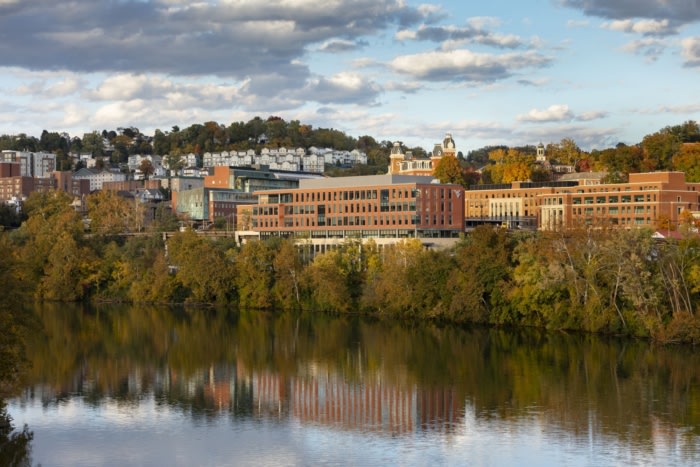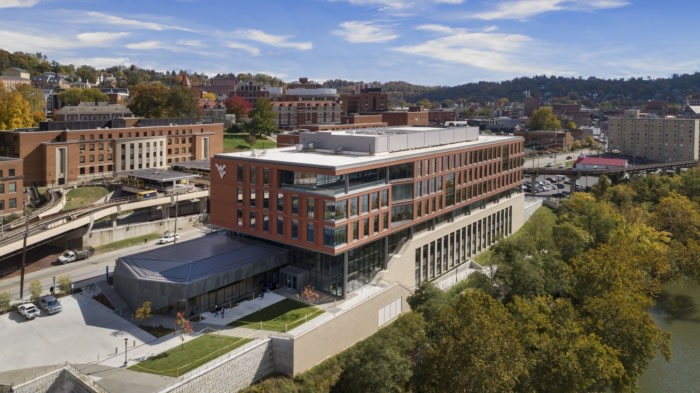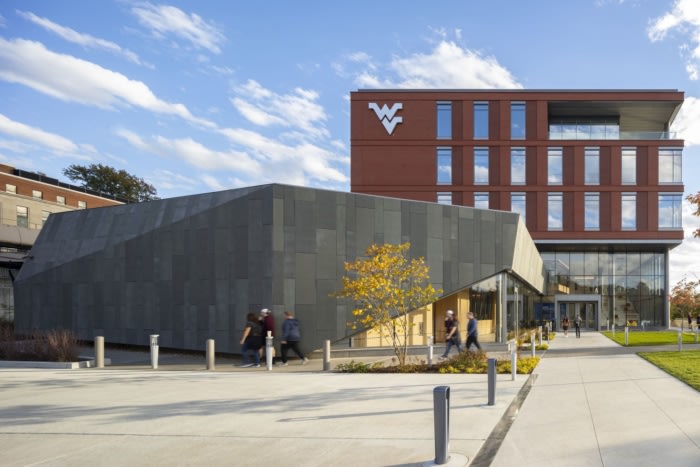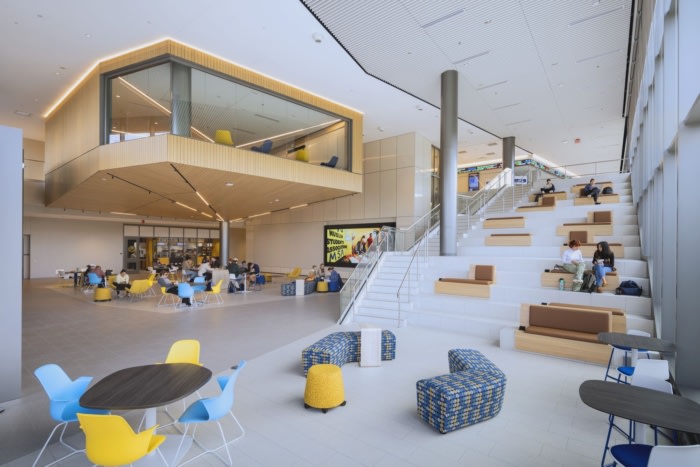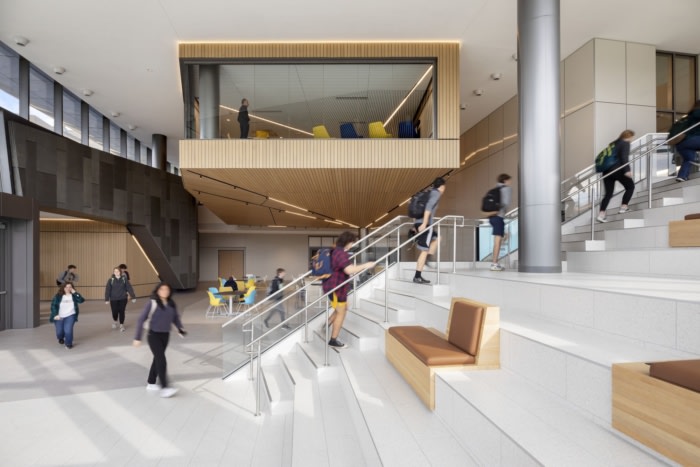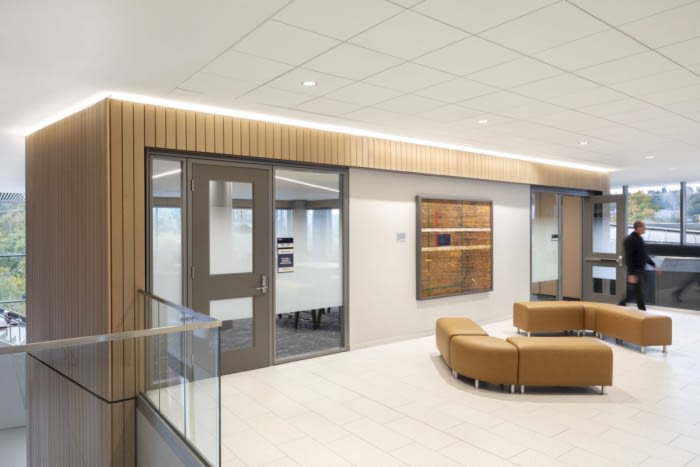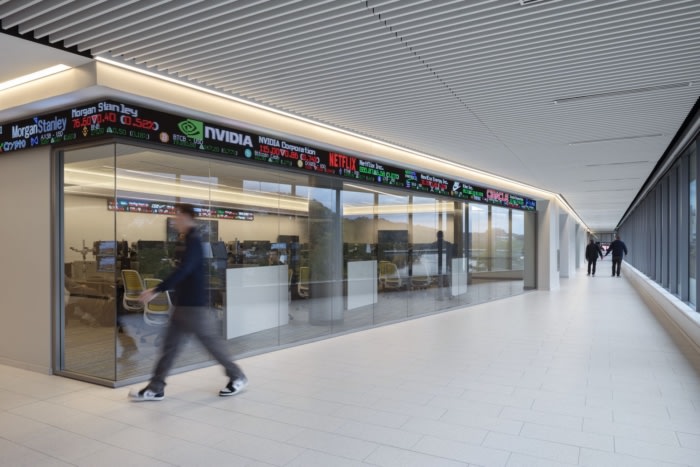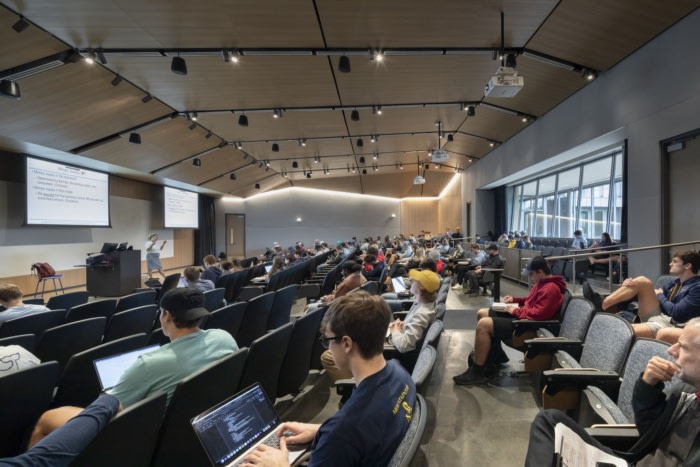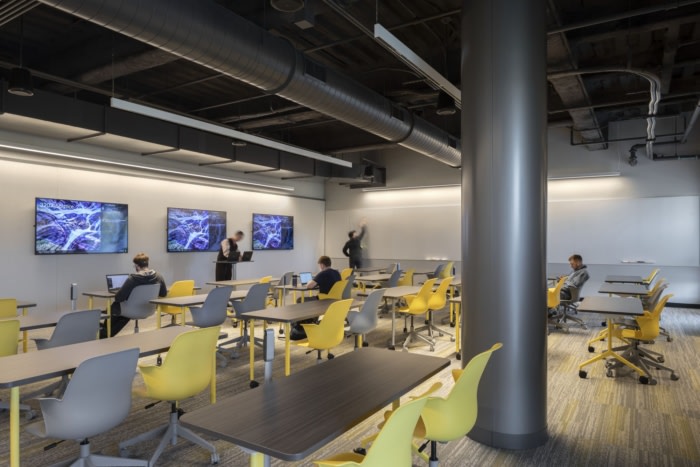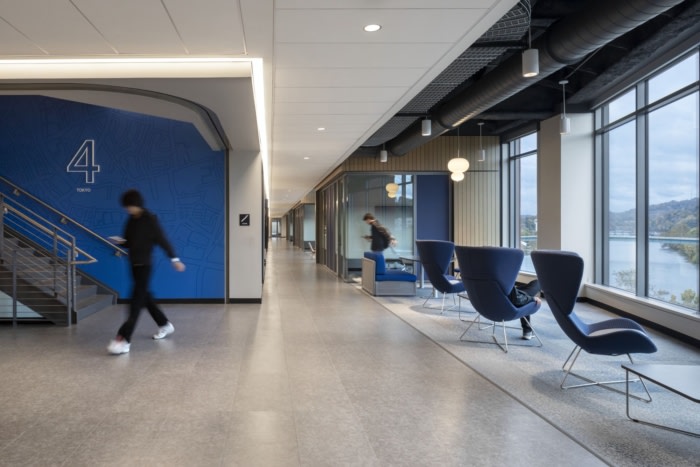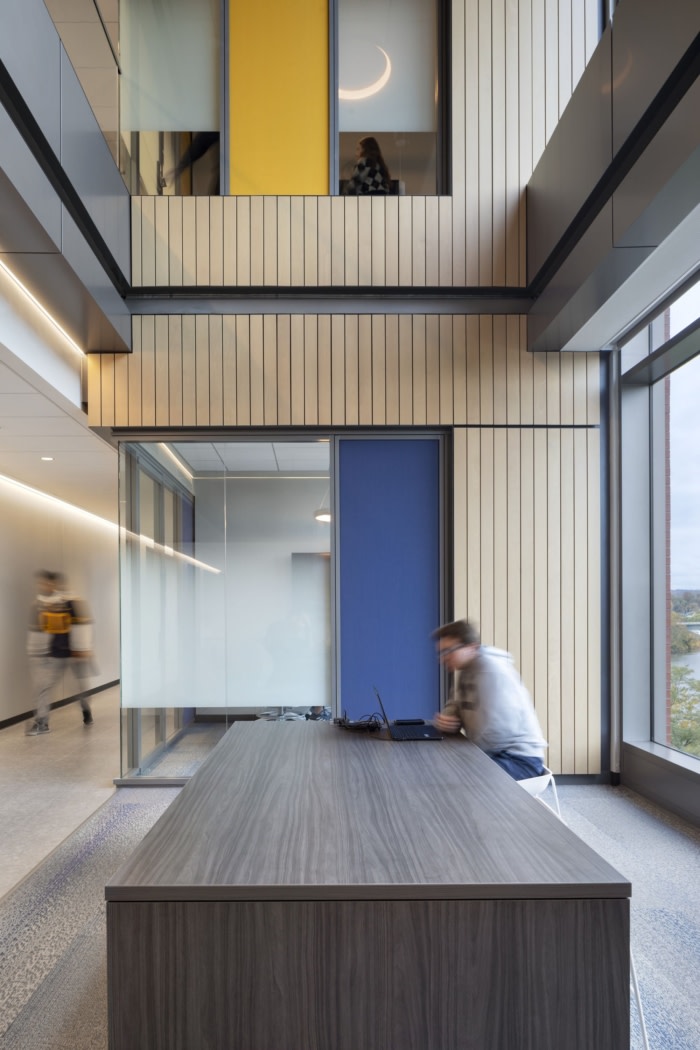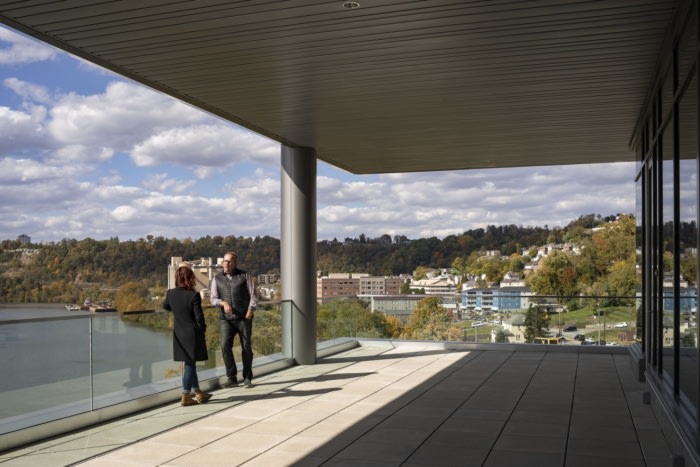West Virginia University – Reynolds Hall, John Chambers College of Business and Economics
The goal of the John Chambers College of Business and Economics was to help WVU write their next chapter in business education in a new home, while transforming their campus, the community of Morgantown, and the student experience.
WVU selected Gensler and Strada to plan and design this project based on our collaborative spirit, local knowledge, and hands-on leadership. The design team employed a research-informed approach while leveraging our extensive business school experience and our transformative workplace and academic incubator expertise.
The vision for the building was developed with support from a variety of stakeholders which established the project drivers and the basis of design. The team kicked off the project with a two-month long discovery phase, facilitating faculty interviews, student workshops, and project tours. The insights garnered from these activities produced a common design language and reinforced the building concept as an anchor, connector, and catalyst.
Anchor
The new Reynolds Hall building greatly improves the landscape of the western part of the campus. Situated on the site of the former Stansbury Hall, along the Monongahela River, this new signature building becomes a campus center, creating a hub of circulation from the existing campus buildings, public pedestrian trails, and recreational riverside courtyards. The building now draws people to this reinvigorated area, connecting the river to the rest of campus, and improving access to the rapid transit system. The fitness center in the lower level draws students and promotes wellness.Connector
Doubling the previous building’s square footage, the new College of Business and Economics fosters campus-wide collaboration, research, and innovation. The building offers formal and informal collaboration spaces combined with a comfortable and healthy workplace for faculty and staff. Dedicated student waiting areas knit the student and faculty zones together while providing students a space to work or meet with peers and faculty in an open, communal environment. These circulation spaces can be used as areas of collaboration or respite, providing spectacular north-south river views for all to enjoy. This floor includes the large lecture hall and main gathering/event space-a welcoming, multipurpose area that will host a variety of activities ranging from guest speakers and presentations to career/alumni and student organization events.Catalyst
The Ideation Hub which hovers over the main entry is a highly adaptable and high-tech space, that puts “business on display.” This space creates a buzz around the future of business and fully supports project work, research, and the entrepreneurial endeavors that are key to WVU’s mission of giving back to their community. Adjacent to the Ideation Hub is the trading room, combining business and computer science (with a special focus on high frequency trading) which will foster a culture of sharing and drive cross-pollination between students, faculty, and departments. The Research and Outreach Centers serve as co-working spaces, “storefronts” with a central bullpen that encourages teaming with each Centers’ leaders, visiting executives, and venture investors. Classrooms are innovative teaching spaces to empower faculty with cutting-edge technology and facilitate group learning. Faculty will intermingle with students as they teach, and students will be able to collaborate with each other as part of the learning experience, reinforcing the future-focused design of WVU’s new business ecosystem. Reynolds Hall breaks the outdated mold of business education by prioritizing equality. Here, students and faculty co-create solutions for a better future for all.Design: Gensler
Collaborator: Strada
Photography: James Ewing


